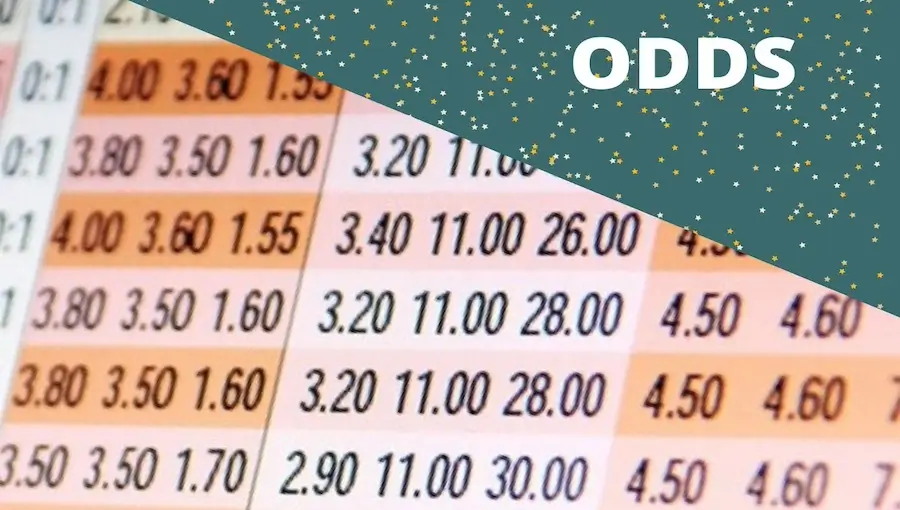In sports betting, understanding the relationship between odds and probabilities is crucial for making informed decisions and evaluating potential outcomes. Odds, often presented in various formats, represent the likelihood of a particular event occurring, while probabilities provide a more direct measure of the chance of that event happening. Converting odds to probabilities allows bettors to assess the true value of a bet and make informed choices based on their risk tolerance and perceived likelihood of success.
The Basics of Odds
What Are Odds?
In the context of sports betting, odds represent the likelihood of a particular outcome occurring in an event. Odds are typically expressed in three different formats: fractional odds (e.g., 2/1), decimal odds (e.g., 3.00), and moneyline odds (e.g., +200 or -150). Different regions and bookmakers use various formats, but the fundamental concept remains the same – odds provide insight into the potential return on your bet.
Understanding Implied Probability
Implied probability is the probability of an outcome happening as suggested by the odds. To convert odds to probability, we must first grasp this concept. Implied probability is an essential element for bettors, as it allows them to assess whether the offered odds represent a good bet.
Converting Odds to Probability
Converting Fractional Odds
Converting fractional odds to probability is relatively straightforward. The formula for converting fractional odds is as follows:
Probability = Denominator / (Denominator + Numerator)
For example, if you have fractional odds of 3/1:
Probability = 1 / (1 + 3) Probability = 1/4
So, the implied probability is 25%.
Converting Decimal Odds
Converting decimal odds to probability is even simpler. The formula for converting decimal odds is as follows:
Probability = 1 / Decimal Odds
For example, if the decimal odds are 3.00:
Probability = 1 / 3.00 Probability = 0.3333 or 33.33%
Converting Moneyline Odds
Converting moneyline odds to probability involves handling both positive and negative moneyline odds differently.
For positive moneyline odds (e.g., +200):
Probability = 100 / (Moneyline Odds + 100)
Using the formula:
Probability = 100 / (200 + 100) Probability = 100 / 300 Probability = 0.3333 or 33.33%
For negative moneyline odds (e.g., -150):
Probability = Moneyline Odds / (Moneyline Odds – 100)
Applying the formula:
Probability = 150 / (150 – 100) Probability = 150 / 50 Probability = 3.00 or 300%

How To Convert Odds With No Stress
Applying Implied Probability
Evaluating Betting Opportunities
Implied probability is a powerful tool for bettors. By converting odds to probability, you can assess whether the bookmaker’s odds are in your favor. If the implied probability is lower than your calculated probability, it may be a valuable betting opportunity. Conversely, if the implied probability is higher, it might not be a wise bet.
The Importance of Comparing Bookmakers
Different bookmakers may offer varying odds for the same event. Understanding how to convert these odds into probabilities allows you to identify the best value bets. By comparing the implied probabilities across multiple bookmakers, you can identify where the odds are most favorable.
Advanced Concepts
The Overround
Bookmakers incorporate an overround, also known as the vig or bookmaker’s margin, into their odds to ensure they make a profit. It’s the extra percentage included in the odds. To convert bookmaker odds to true probabilities, you must account for the overround.
To adjust for the overround, you can use the following formula:
True Probability = Implied Probability / (1 + Overround)
For example, if you calculate an implied probability of 50% but the bookmaker’s overround is 5%:
True Probability = 50% / (1 + 0.05) True Probability = 50% / 1.05 True Probability ≈ 47.62%
Kelly Criterion
The Kelly Criterion is a mathematical formula used to determine the optimal bet size based on your perceived edge and bankroll. To apply the Kelly Criterion effectively, you need to understand how to convert odds to probability accurately. By knowing the true probability of an outcome, you can make more precise calculations and manage your bankroll more efficiently.
Practical Tips
Always Shop for Value
Converting odds to probability is just one part of the puzzle. To be a successful bettor, you must constantly seek out value in the betting markets. This means comparing odds from different bookmakers and identifying instances where the implied probability is less than the true probability.
Keep Detailed Records
Record-keeping is crucial in the world of sports betting. By documenting your bets, the odds, and the associated probabilities, you can analyze your performance and refine your strategies over time.






